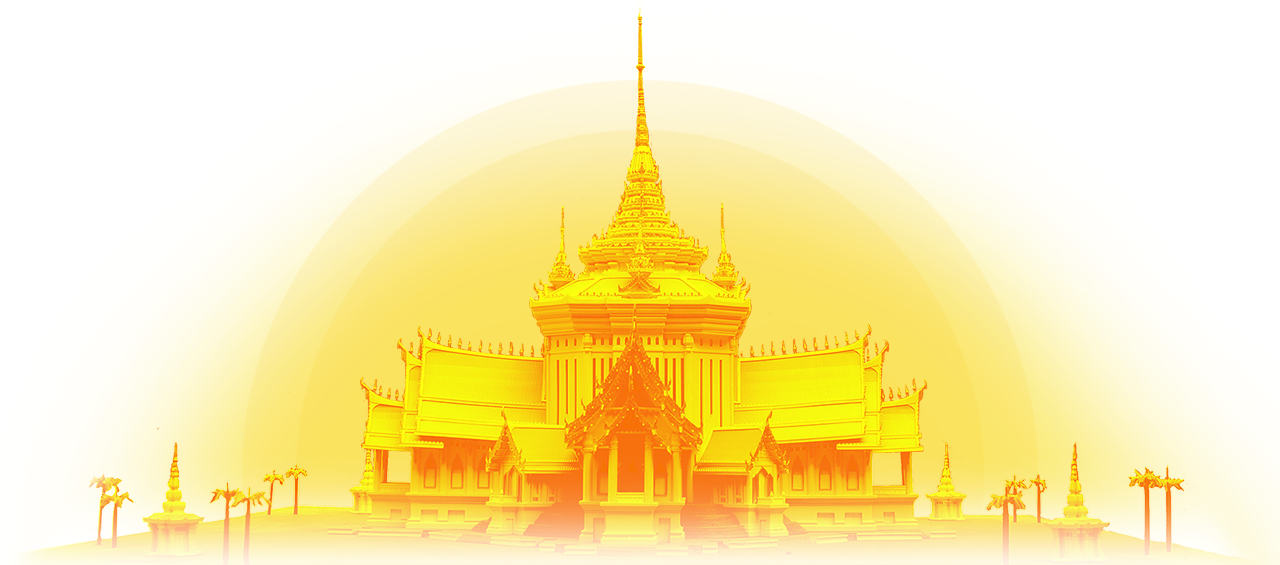- Home
- Meditation
- Meditation
What is meditation?
Meditation is to train the mind to become peaceful and to stop still in meditation, this is also called samadhi in Pali. There are four mind components, vision, memory, thought and cognition. When these four stop still at the same point during meditation, it is called concentration of mind. There are two types of meditation, samatha (concentration meditation) and vipassana (insight meditation), both of which will be explained later in this section.
Who can meditate?
Meditation is not reserved for Buddhists only. It also helps people from other religions to fully comprehend the depths of their religion.
Why do we meditate?
Meditation has countless benefits for people in all walks of life, especially, the mental benefits. A busy person gets rid of tension and worried person will become calm and find peace. It helps in overcoming fear in the heart and increases an elderly person’s joy of living. There is even strong evidence that it can help alcoholics and drug addicts in overcoming their dangerous habits. It will increase one’s ability to learn and memorize and, moreover, make one a happy person both awake and asleep, not frightened of danger or even of death.
What is the purpose of meditation?
Samatha meditation combines developing inner peace and concentration together. For most new meditators in today’s hectic world, the immediate objective is to cope with stress and develop personal serenity. Concentration provides this immediately. But, the Buddhist objective is higher. It is raising consciousness to more refined planes through purifying the mind from mental defilements such as craving, anger and delusion.
What should we expect to achieve from it?
Direct benefits that can be anticipated include improved mental and physical health and enhanced concentration. The meditator develops distancing from the passions, cravings and delusional attachments which spin us around in circles. This results in a more peacefully happy life and indirectly fosters harmony in the family, the society, and the world.
Beyond these external consequences, samatha meditation develops the mental tools for effective, objective observation of nature for use in vipassana (insight) meditation to develop Right Wisdom. In vipassana, the meditator becomes able to penetrate the four noble truths to see clearly and compare objectively the compound, impermanent, unsatisfactory suffering, and hollow emptiness of this world with the non-compound, eternal, peacefully happy, and ultimately meaningful essence of nibbana.
What should we contemplate?
Most broadly, samatha meditation is mental training. Lord Buddha listed nine effective subjects for samatha meditation. The first four are the key foundations of mindfulness – the body, feelings, mind and mental objects. We shall review each of these in detail. The next three are contemplation of old age, sickness, and death. Eighth is meditation that we are all ultimately destined to be separated from what we love, even from our own self. Finally, the ninth theme is that we are all inevitably subject to reap the karmic consequences of our own actions. This is a natural law of cause and effect. There is no way out. Only conscientious good behavior can save us.
Is meditating doing good?
Meditation is the way to train and purify one’s mind. This is very meritorious. Why? When the mind wanders outside, it will contact and attach to worldly objects you like, or feel aversion towards the objects you dislike. That will cause passion to arise in the form of craving, greed, ill will, or delusion. When you meditate and bring your mind inside, even for a second, it is very meritorious because the mind stops unattached to any worldly object. Thus, your mind will become purer and purer. Try to do it everyday, whenever you feel free in any position and at any place.
What are the benefits of meditation?
Meditation is very useful in daily life, even for those who don’t meditate formally. There are five concrete benefits. First, meditation maintains and improves mental health, developing inner peace and tranquility which foster serenity, contentment and happiness. Second, it engenders cool, calm composure, fostering self-possessed, rational behavior, unbiased judgment, and smooth, unruffled social interaction. Third, meditation focuses thought, dispelling confusion and leading to more perceptive analysis and deeper insight. Fourth, it maintains and improves physical health, providing rest and relaxation, averting sickness, and developing strength and vigor. Finally, the fifth and ultimate benefit of meditation is cleansing out the Five Hindrances, which constrict our mental processes, in order to purify the mind to higher levels of consciousness. The Five Hindrances are: drowsiness or laziness, doubt or uncertainty, ill will or enmity, distraction or restlessness, and sensual desire or enchantment.
What is the proper time to meditate during the day?
It all depends. Some people say in the morning at 3:00, 4:00, or 5:00 am, and some say 9:00 or 10:00 am. Afternoon is not very good. It becomes good again around 7:00, 8:00, 9:00 or 10:00 pm. So, find the best time for yourself.
How long should a meditation session be?
It is recommended about thirty minutes for beginners. After you get used to it, it can be more and more until about an hour. If one is very good, two hours doesn’t matter. Some people change their position by walking and meditating at the same time, it is also called walking meditation. This is another way for meditation and it is very helpful too, especially forest monks who want to be relaxed from sitting and meditating all day.
Can we meditate before going to sleep?
Yes, but, it depends upon one’s physical fitness and environment. If you feel exhausted or tired, take a rest. Afterwards, when you can find the proper conditions such as a quiet place, good weather and free time, meditation can be very helpful at any time. It depends upon how you feel. The best way is to try to do as much as you can without forcing it too much. Don’t be too eager. Sometimes you might sit under a tree in good weather for only a couple of minutes and you can see the sphere [mentally see a light object]. Some people can see it while walking along, not sitting formally. When your merit becomes full, you can see it. When your mind becomes tranquil, peaceful and still, you can also see it right away because the mind becomes perfectly concentrated.
Samatha and vipassana meditation
The word samatha means making the mind calm or tranquil, free from the five mental hindrances. Samatha meditation helps prepare the mind for insight or vipassana meditation. The five mental hindrances are attachment to sensual desire, ill-will, inactivity or sleepiness, anxiety or restlessness, and doubt. The mind is accustomed to flitting from object to object in the outside world. Concentrating the mind and bringing it inward requires effort, but the mind cannot be forced. Therefore, Lord Buddha taught various concentration devices.
Vipassana meditation is the technique for developing Right Wisdom. This derives from contemplation of the four foundations of mindfulness (satipatthana), the physical body, feelings, mind, and dhamma (phenomena). It includes Right Wisdom with regard to the five hindrances, the five aggregates, the four noble truths, and the twelve links in the chain of dependent origination. (paticca-samuppada).




